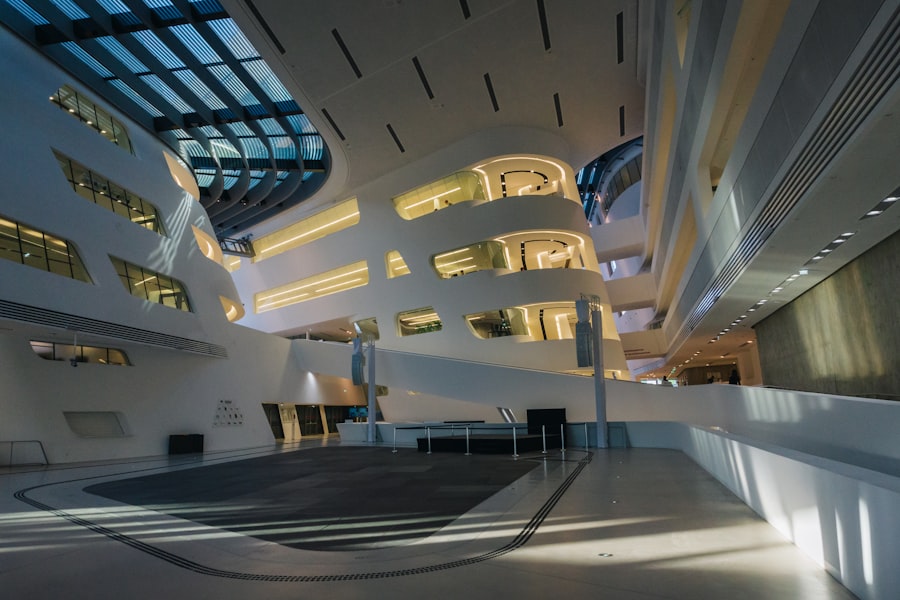The concept of a smart home revolves around the integration of technology into residential spaces to enhance convenience, security, and energy efficiency. At its core, a smart home utilizes a network of devices that communicate with each other and can be controlled remotely, often through a smartphone or tablet. This interconnectedness allows homeowners to manage various aspects of their living environment, from lighting and heating to security systems and appliances, all from a single interface.
The evolution of smart home technology has been driven by advancements in the Internet of Things (IoT), which enables everyday objects to connect to the internet and share data. Smart homes are not merely about convenience; they also offer significant benefits in terms of energy management and security. For instance, smart thermostats can learn a homeowner’s schedule and adjust heating or cooling accordingly, leading to reduced energy consumption.
Similarly, smart security systems can provide real-time alerts and remote monitoring, ensuring that homeowners can keep an eye on their property even when they are away. As technology continues to advance, the possibilities for smart homes expand, making them increasingly appealing to a broader audience.
Key Takeaways
- Smart home technology allows for the automation and control of various devices and systems within a home, enhancing convenience and efficiency.
- Integrating technology into interior design involves considering the placement and functionality of smart devices to complement the overall design aesthetic.
- When choosing smart home devices, it is important to consider compatibility, functionality, and the specific needs and preferences of the homeowner.
- Designing a functional and aesthetic smart home involves balancing the practicality of technology with the visual appeal of the interior design.
- Integrating smart home technology with traditional interior design requires thoughtful planning and consideration of how to seamlessly incorporate modern devices into a classic design scheme.
Incorporating Technology into Interior Design
Incorporating technology into interior design requires a thoughtful approach that balances aesthetics with functionality. Designers must consider how technology can enhance the living experience without compromising the visual appeal of a space. For example, integrating smart lighting systems can create dynamic atmospheres that change according to the time of day or the homeowner’s mood.
These systems can be programmed to adjust brightness and color temperature, allowing for a seamless transition from bright, energizing light during the day to soft, warm tones in the evening. Moreover, the placement of technology within a space is crucial for maintaining an uncluttered look. Designers often opt for built-in solutions that hide wires and devices, ensuring that technology does not detract from the overall design.
For instance, smart speakers can be integrated into furniture or wall-mounted systems that blend with the decor. This approach not only preserves the aesthetic integrity of the space but also enhances usability by making technology more accessible and intuitive for residents.
Choosing the Right Smart Home Devices

Selecting the appropriate smart home devices is essential for creating a cohesive and functional environment. The market is flooded with options, ranging from smart thermostats and lighting systems to security cameras and voice assistants. When choosing devices, homeowners should consider compatibility with existing systems and the ease of integration into their daily lives.
For example, opting for devices that work seamlessly with popular ecosystems like Amazon Alexa can simplify control and enhance user experience. Additionally, it is important to evaluate the specific needs of the household. Families with young children may prioritize safety features in smart devices, such as cameras with motion detection or smart locks that can be controlled remotely.
On the other hand, tech-savvy individuals might seek out advanced automation features that allow for complex routines and schedules. By aligning device selection with lifestyle requirements, homeowners can ensure that their smart home setup is both practical and tailored to their unique preferences.
Designing a Functional and Aesthetic Smart Home
Designing a smart home that is both functional and aesthetically pleasing involves careful planning and consideration of various elements. One key aspect is the layout of the space, which should facilitate easy access to smart devices while maintaining an open and inviting atmosphere. For instance, placing smart hubs in central locations allows for better connectivity throughout the home, while strategically positioning smart speakers can enhance audio quality without disrupting the visual flow of a room.
In addition to layout, color schemes and materials play a significant role in achieving a harmonious design. Homeowners may choose to incorporate sleek, modern finishes that complement high-tech devices or opt for more traditional materials that evoke warmth and comfort. The integration of natural elements, such as wood or stone, can also soften the appearance of technology-heavy spaces, creating a balanced environment that feels both contemporary and welcoming.
Integrating Smart Home Technology with Traditional Interior Design
The integration of smart home technology with traditional interior design presents unique challenges and opportunities. Many homeowners appreciate classic design elements but also desire the convenience offered by modern technology. To achieve this balance, designers often employ strategies that allow for seamless integration without sacrificing style.
For example, vintage-style light fixtures can be outfitted with smart bulbs that provide both functionality and aesthetic appeal. Another approach is to use technology as an accent rather than a focal point. Smart devices can be discreetly incorporated into furniture or cabinetry, allowing them to blend into the background while still providing essential functions.
This method preserves the integrity of traditional design while enhancing it with modern conveniences. By thoughtfully considering how technology interacts with established design principles, homeowners can create spaces that honor both heritage and innovation.
Maximizing Energy Efficiency in a Smart Home

Energy efficiency is one of the most compelling advantages of adopting smart home technology. Smart devices can significantly reduce energy consumption by optimizing usage patterns based on real-time data and user behavior. For instance, smart thermostats can analyze historical temperature data and adjust settings automatically to minimize energy waste while maintaining comfort levels.
This not only leads to lower utility bills but also contributes to environmental sustainability. Moreover, integrating energy-efficient appliances into a smart home ecosystem can further enhance savings. Many modern appliances come equipped with smart features that allow users to monitor energy usage and receive alerts when consumption exceeds set thresholds.
By combining these appliances with solar panels or energy storage systems, homeowners can create a self-sustaining energy model that maximizes efficiency while reducing reliance on traditional power sources.
Creating a Seamless Smart Home Experience
A seamless smart home experience hinges on the interoperability of devices and user-friendly interfaces. Homeowners should prioritize systems that communicate effectively with one another, allowing for streamlined control across various platforms. For example, integrating lighting, heating, and security systems into a single app can simplify management and enhance user satisfaction.
This level of integration enables homeowners to create customized routines that align with their daily activities. Additionally, voice control has emerged as a pivotal feature in creating a seamless experience. Voice-activated assistants like Amazon Alexa or Google Assistant allow users to interact with their smart home devices effortlessly.
This hands-free approach not only enhances convenience but also makes technology more accessible for individuals who may not be as tech-savvy. By focusing on ease of use and intuitive design, homeowners can ensure that their smart home remains an enjoyable and efficient space.
Working with Professional Interior Designers for Smart Home Projects
Collaborating with professional interior designers can significantly elevate the process of creating a smart home. Designers bring expertise in both aesthetics and functionality, ensuring that technology is integrated thoughtfully into the overall design scheme. They can help homeowners navigate the myriad options available in the market, selecting devices that align with both style preferences and practical needs.
Furthermore, professional designers are adept at anticipating potential challenges during installation and integration phases. They understand how to balance technical requirements with design principles, ensuring that installations are not only effective but also visually appealing. By leveraging their knowledge of current trends and technologies, designers can help homeowners create spaces that are not only functional but also reflect their personal style and lifestyle needs.
When designing a smart home interior in Dubai, it is important to consider all aspects of the space, including the furniture. One key element to consider is the sofa, as it can set the tone for the entire room. A stylish sofa from Dubai can elevate the design of a smart home, adding both comfort and sophistication. For more information on finding the perfect sofa for your smart home interior, check out this article on
